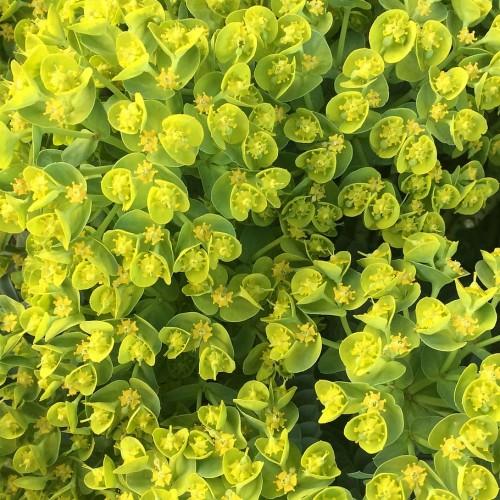
spurge
Euphorbia 'Imprkalip' KALIPSO
Cycle:
Herbaceous Perennial
Watering:
Minimum
Hardiness Zone:
4 - 8
Flowers:
Flowers
Sun:
Full sun,part shade
Growth Rate:
Low
Maintenance:
Low
Drought Tolerant:
Yes
Salt Tolerant:
Yes
Thorny:
Yes
Care Level:
Medium
watering
Watering Spurge (Euphorbia 'Imprkalip' Kalipso) is an important task to keep your plant healthy and beautiful. Water deeply and thoroughly, making sure to moisten the entire root zone. The soil should be damp, but not saturated. During summer temperatures, water your spurge about once every 7 to 10 days, or when the soil is just starting to dry out. During the winter, you can reduce the frequency of watering to every 10 to 14 days. Spurge may benefit from a second, light watering of approximately 1-half the previous amount after the first watering has dried. Make sure to water your spurge at the base of the plant in the morning when possible, as wet leaves in the evening can cause fungal diseases.
sunlight
Spurge (Euphorbia 'Imprkalip' KALIPSO) is best grown in full sun, meaning 6-8 hours of direct sunlight a day. This type of succulent does well with plenty of light, so providing it with as much sun as possible will result in better growth and development. During the summer months, plants should be aiming to maximize their sunlight intake and you will find that even 8-10 hours of direct sunlight will benefit the plant. In the winter months, spurge should still receive 4-6 hours of direct sunlight, which may be difficult in climates with shorter days. Placing the plant in an area where it can take advantage of the additional sunlight that reflects off surfaces is beneficial to allow for maximum growth.
pruning
It is recommended to lightly prune Spurge (Euphorbia 'Imprkalip' KALIPSO) in early spring to promote new foliage growth. If the plant has become rangy, a heavier pruning can be done at this time as well. Simply cut back any material that looks dead or unhealthy as far up as possible. In late spring or early summer, the plant can also be lightly shaped up with scissors or shears to create a compact form. Deadheading any faded blooms can also be done at this time. Spurge tolerates heavier pruning, so if the plant gets out of control late in the season, feel free to do a more significant pruning to shape it up and bring it back into scale. Avoid pruning after mid-summer, when the plant begins to enter its dormant stage.
